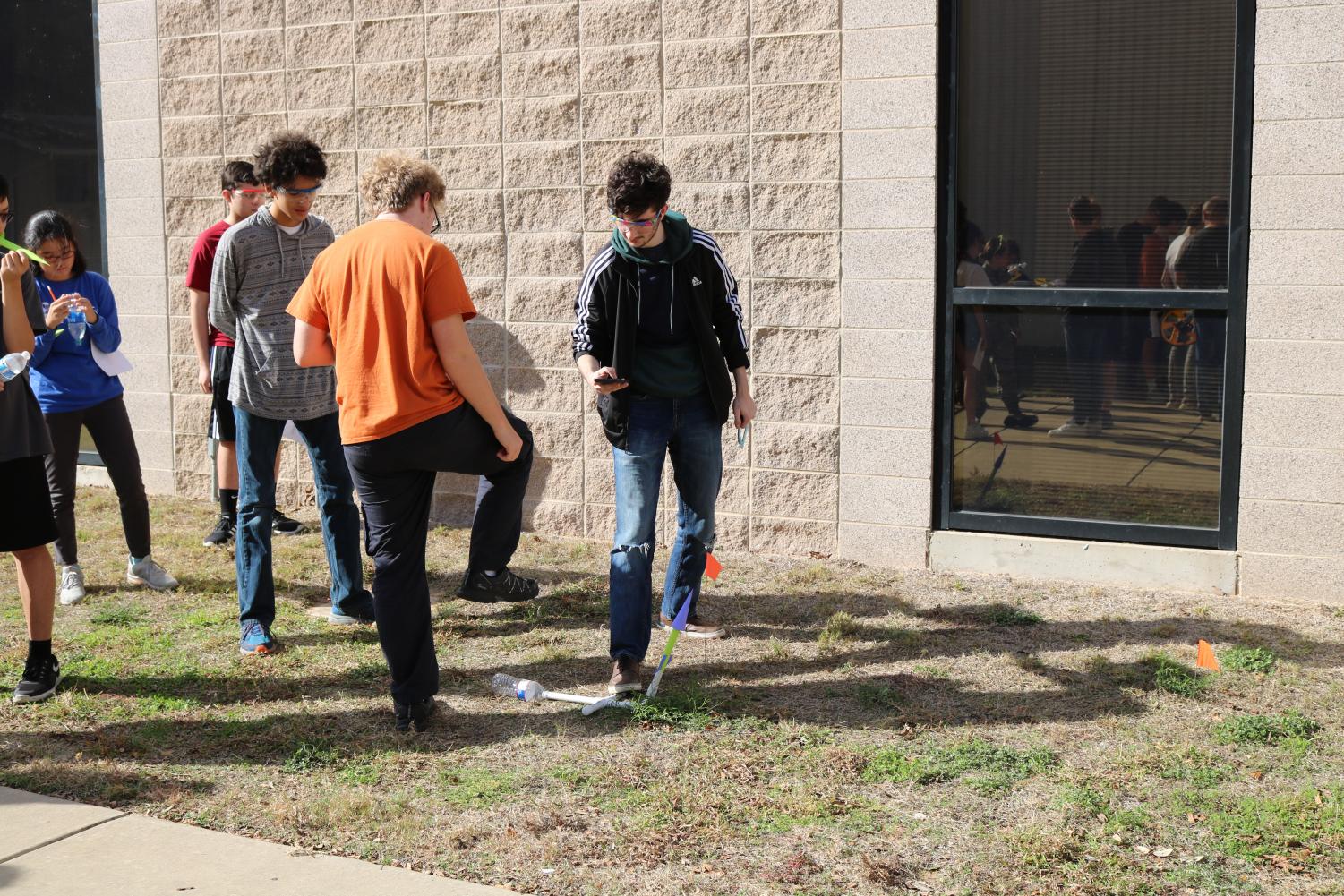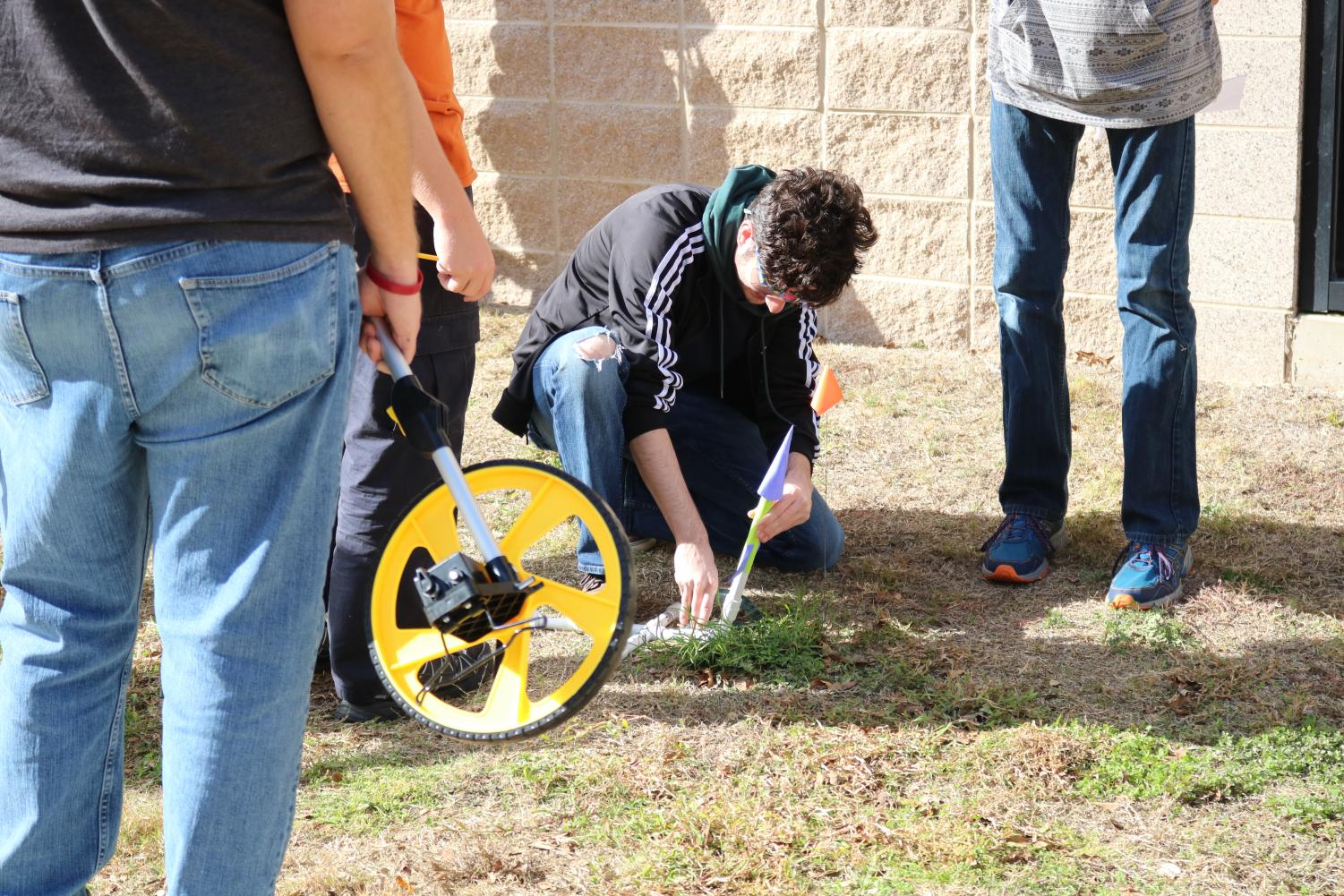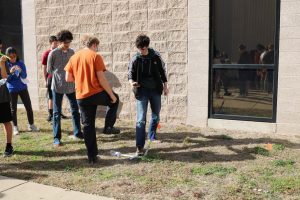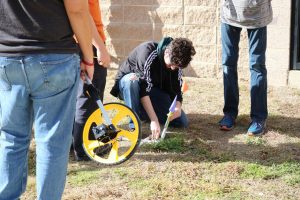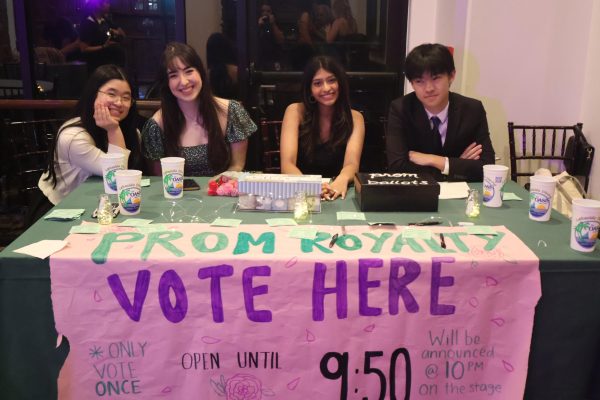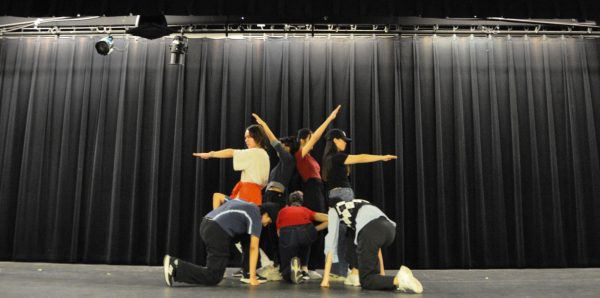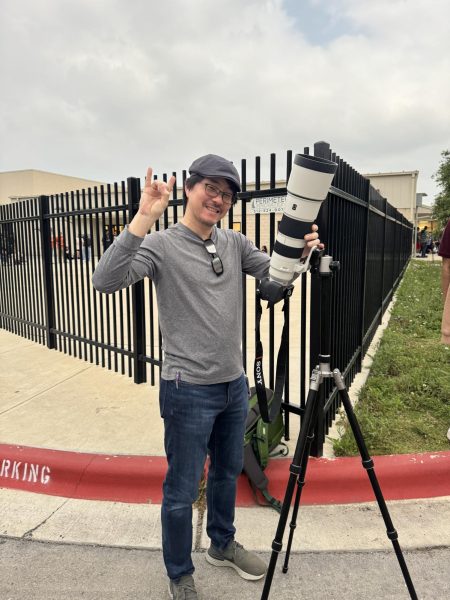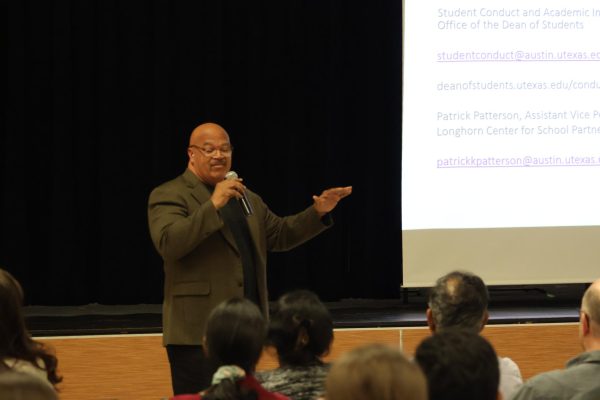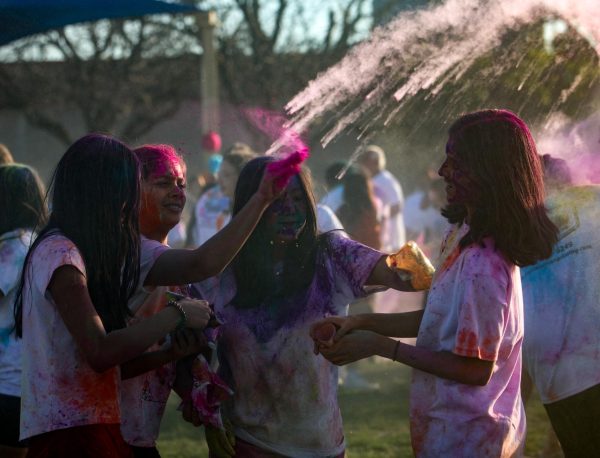General Physics Students Launch Into Projectile Motion Unit with Paper Rockets
Launching into one of the final portions of their Projectile Motion Unit, Mr. Nash’s General Physics classes took part in an exciting investigation to better understand the forces involved in the motion of a projectile through paper rockets.
Divided into small groups, students were challenged to conceptualize and apply projectile motion equations in order to design, measure, and create their own paper rockets to better understand the interactions between these different variables.
“They’ve been analyzing different problems using projectile motion equations to calculate different things like distance travelled, flight time, and high velocity,” Mr. Nash said.
With the freedom to incorporate many unique elements in their project, students’ creativity and problem-solving skills were put to the test as they considered the many possible routes to take in terms of structure and function.
“We made the fins of the rocket really long because we thought that would work, and the tip very thin,” Margarita Bermejo ‘20 said. “I think in the end it was successful. We made 77 meters.”
Launching mechanisms were crafted out of PVC piping and empty two liter bottles, where the students would take turns applying pressure to it in order to send their rockets up in the air. Flight records set in previous years were being tested, and in the face of competition, the groups enjoyed interacting with each other for an interactive hands-on activity.
“We worked hard because we had to make it in class, but it was fun knowing we had a chance to beat [our classmates],” Matias Bermejo ‘21 said.
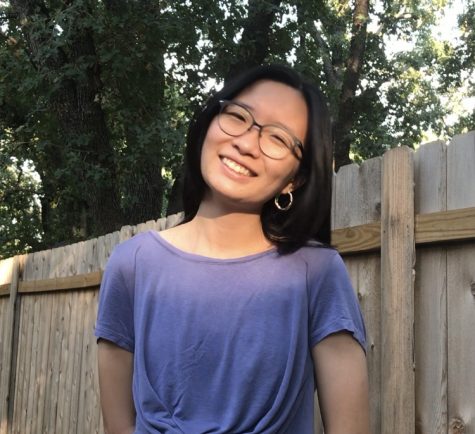
Class of 2023
Ardent advocate of em dashes, pastel cardigans, and above all, the written word. Amoli and I are honored to lead a publication by students,...

